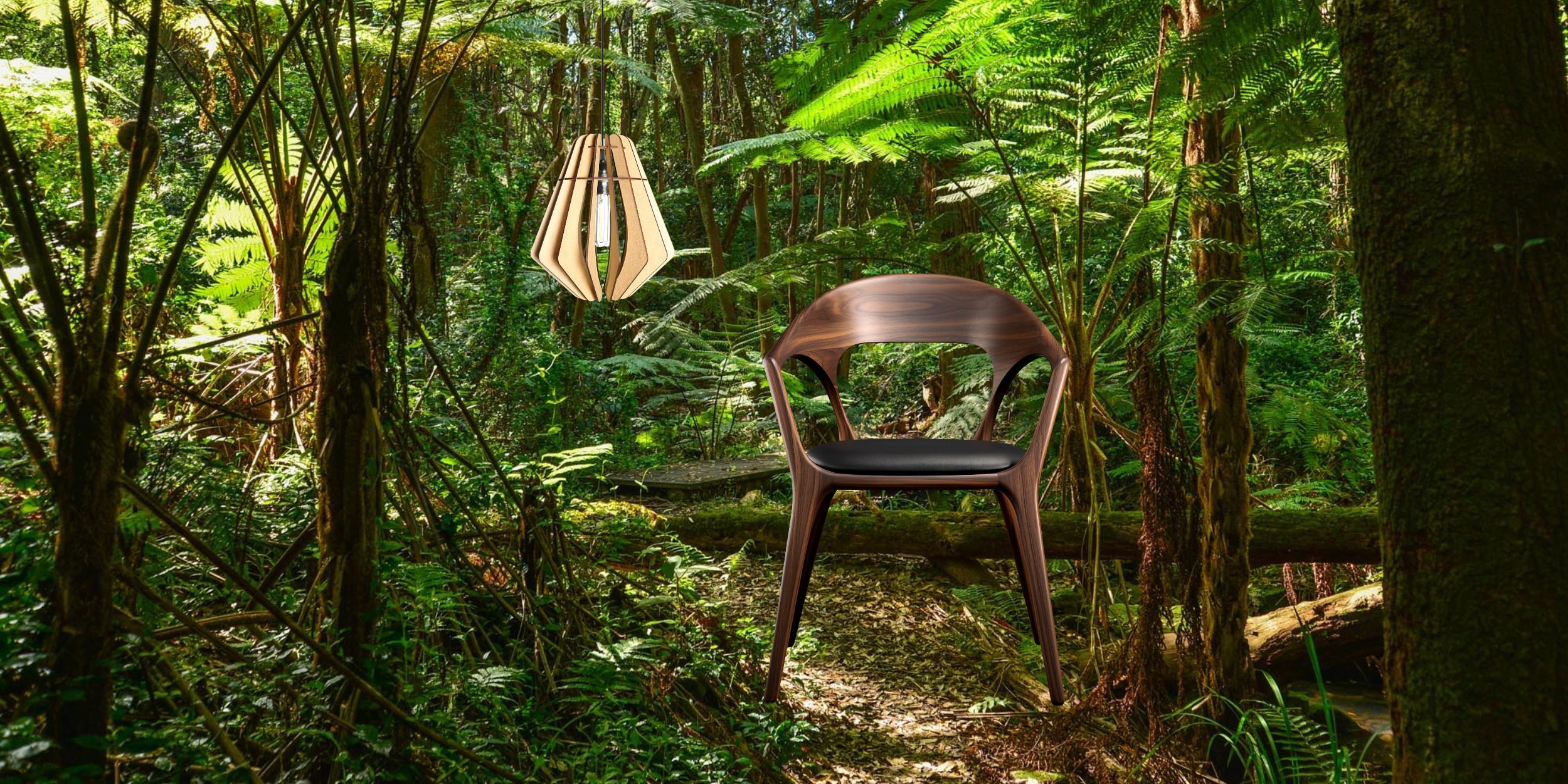
We could go deep into this and explain the modern origins of biophilic design as coined by Erich Fromm in his book The Anatomy of Human Destructiveness. Or we could explain how Stephen R. Kellert who was a Professor Emeritus of Social Ecology at Yale University’s School of Forestry & Environmental Studies took it one step further and created a manifesto for including biophillic design into architectural spaces… But it’s all been said before.
In that vein, what we’re going to focus on in this article is how you can use biophilic design within your interior spaces. Not to mention how you’ll be a sustainability advocate by doing so.
To put it simply, biophilic design is based on the foundational concept based on the human need to connect with nature on a physical and psychological level. Meaning ‘is supposed to help you to feel good being in the space and to keep your head level and calm.
At its heart, biophilic design supports well-being by using natural light, materials like wood and stone, indoor plants, and even water elements to create spaces that have you feeling zen in body and mind. There have been a number of studies done on how biophilic design that state this type of interior style is a good bet when looking at ways to bring the outside in.
By using renewable materials and encouraging ecological mindfulness, this approach encourages the use of eco-friendly materials that blend in with natural elements. Creating a synergy between biophilic design and sustainability enables us to create homes that are not only beautiful and restorative but also kind to the planet. It’s clearly a win-win situation.

Few design styles align with the principles of biophilic design as naturally as Scandinavian interiors. Known for their minimalist aesthetic, clean lines, and focus on natural materials, Scandinavian spaces have long embraced the essence of the natural world. The Scandinavian lifestyle prioritizes simplicity, functionality, and harmony with the environment, making it an almost perfect match for the goals of biophilic design.
One of the key elements in both biophilic and Scandinavian design is the abundant use of natural light. In northern European climates, where daylight is precious, large windows and open layouts are often designed to maximize the flow of natural light.
This emphasis on light is essential not only for aesthetic purposes but also for maintaining well-being—an important principle of biophilic design. The integration of natural materials like wood, stone, and wool into Scandinavian interiors mirrors the biophilic approach, fostering a sense of warmth and connection to the earth.
Scandinavian design’s neutral colour palettes often evoke feelings of calm and tranquillity in tandem with biophilic design’s goal of creating serene, health-centred aces. A seamless blend of natural beauty and thoughtful design helps to make Scandinavian interiors an ideal foundation for implementing biophilic principles. And by blending Scandinavian design with Biophilic interior design principles, it will be easier to create a nature-inspired space at home within a reasonable budget.
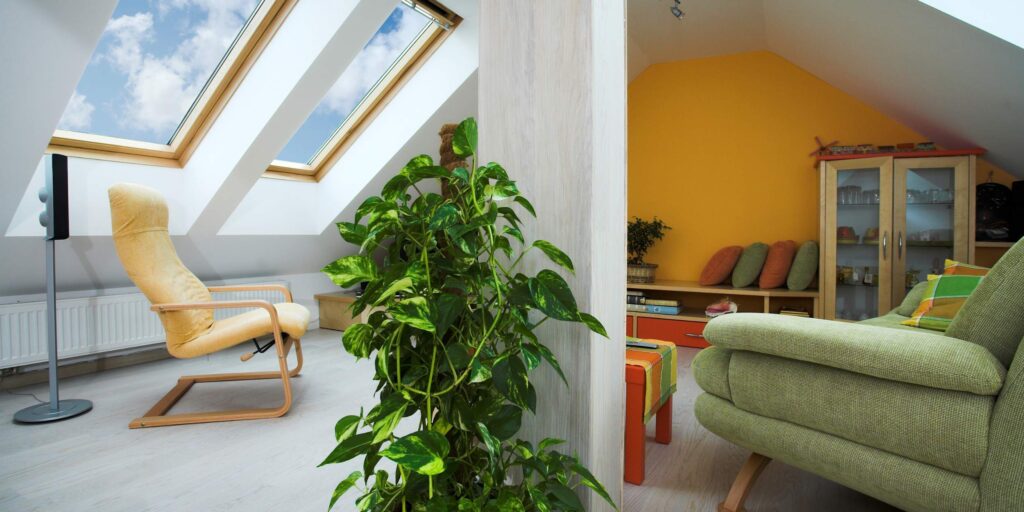
One of the most important aspects of biophilic design is the use of natural light. Maximizing sunlight in a space enhances mood, increases productivity, and helps regulate circadian rhythms. Designers often use large windows, skylights, or glass walls to bring natural light into the home.
This can be difficult in places where the sun doesn’t shine as mush as we’d like it to. In that case, leaving yor windows bare of blinds and curtains and instead using plants as a screen so your neighbours can’t see everything you are doing is suggested.
Architects and designers are prioritizing the use of larger windows, skylights, and open layouts that allow for the flow of natural light throughout a home or office.
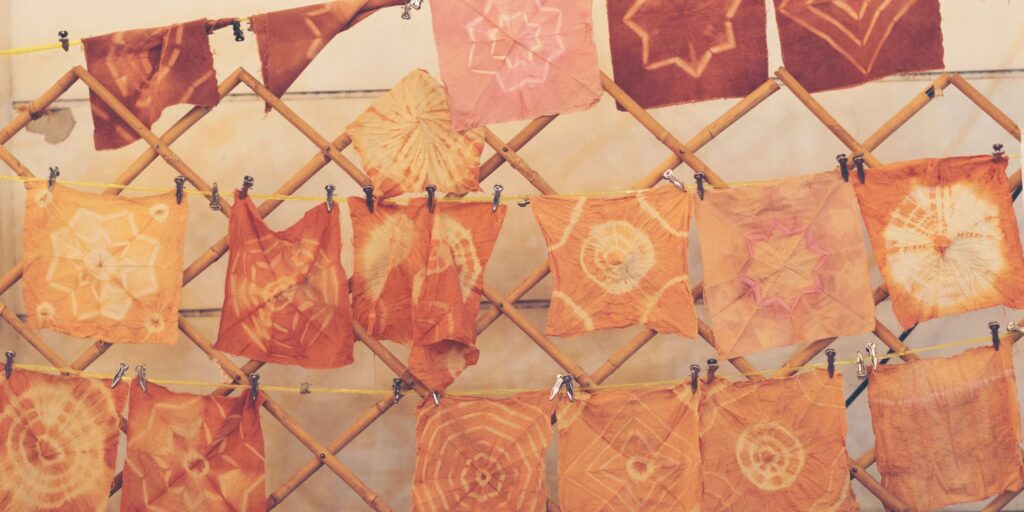
The color palette in biophilic design tends to draw from nature. Earth tones such as browns, greens, beiges, and blues dominate, creating a soothing and balanced atmosphere. These colors mimic the environment, from forests and oceans to mountains and deserts.
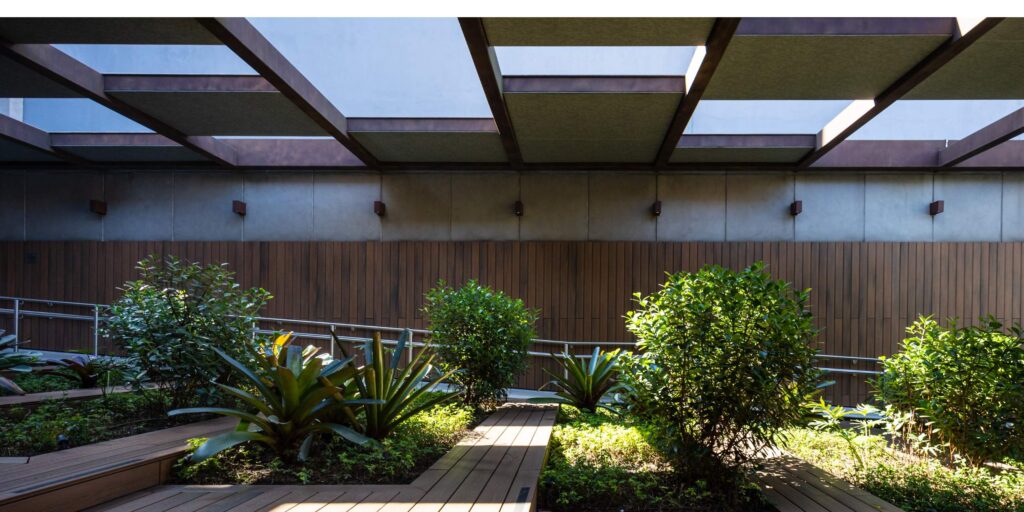
Biophilic design seeks to blur the lines between indoor and outdoor spaces. This can be achieved through large glass doors that open to gardens, balconies, or patios, creating a seamless transition between the interior and the exterior environment.
For homes with outdoor access, biophilic design encourages the creation of multi-functional outdoor spaces like patios, gardens, or balconies where nature can be enjoyed as an extension of indoor living.
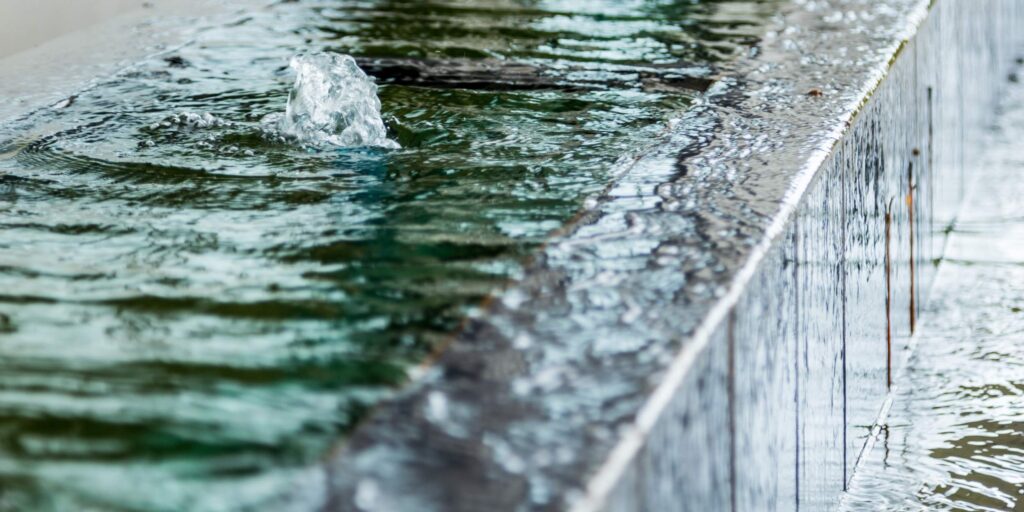
The presence of water, through fountains, small indoor ponds, or water walls, can have a calming effect. The sound of flowing water is particularly beneficial in promoting relaxation and reducing stress.
In home design, small water features like indoor fountains or aquariums can serve as focal points while contributing to a calming atmosphere.
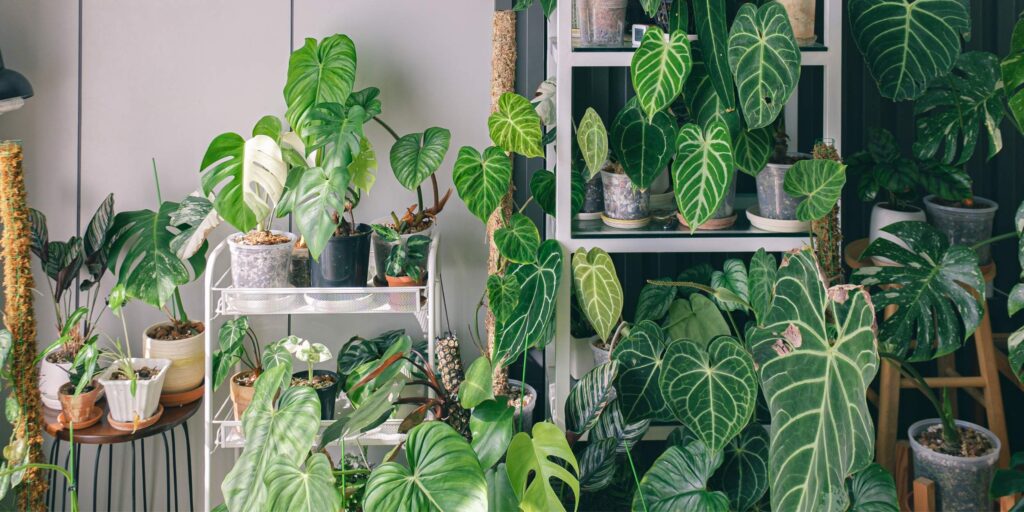
Incorporating live plants into interiors not only improves air quality but also contributes to a sense of tranquility and connection with nature. Whether through large potted plants, green walls, or vertical gardens, biophilic spaces emphasize a living, breathing connection to the natural world.
These are increasingly common in both residential and commercial settings. Vertical gardens maximize greenery without taking up floor space, creating a vibrant, lush atmosphere indoors.
If you have trouble keeping indoor plants alive, try using a variety of succulents to begin with. Monstera are another plant that are very hard to kill, but need much more space to thrive.
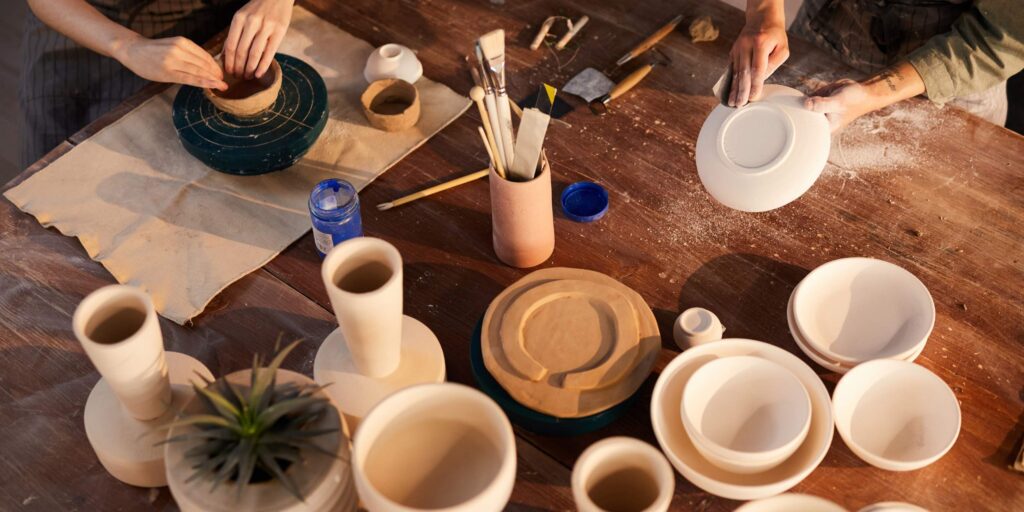
Biophilic design incorporates natural materials like wood, stone, clay, bamboo, and wool to create a tactile and organic environment. These materials provide both visual and textural warmth, enhancing the sensory experience of the space.
Incorporating materials like reclaimed wood, jute, rattan, and stone in furniture design adds warmth and an organic feel to spaces, while also promoting sustainability.
Wool blankets, clay vases, bowls and wooden furniture are easy ways to gain the look without completely rebuilding your interior.
Ideally, biophilic design involves having access to views of natural landscapes from within the space. Whether it’s a view of trees, mountains, or a body of water, simply being able to see nature has been shown to reduce stress and improve mood.
Beyond visual design, biophilic spaces often include natural soundscapes, such as the sounds of birds or water. These auditory elements enhance the sensory engagement with the space.
Natural textures, like the roughness of stone or the smoothness of wood, are often a good way to incorporate biophilic design into your interiors without having to redesign the entire space.
Research from the Technical University of Denmark showed that indoor plants can remove up to 75% of air pollutants within 5 hours, significantly improving air quality in sealed environments typical of energy-efficient European homes have shown that environments with natural elements lead to improved mental health, reduced stress, and enhanced cognitive performance.
A study by the University of Exeter found that employees working in environments with natural elements reported a 15% increase in well-being and a 6% increase in productivity.
The incorporation of natural elements has a calming and restorative effect, helping to reduce anxiety and stress. In combination with natural textures, sounds, and visuals, biophilic interior design helps to create a sense of peace and serenity.
Incorporating natural ventilation through the use of windows, vents, and skylights is important in biophilic spaces. Fresh airflow contributes to both physical well-being and a heightened connection to the outdoors.
Incorporating plants into the home not only contributes to aesthetic value but also helps purify the air, improving oxygen levels and reducing harmful pollutants.
The presence of water has long been used in biophilic design to evoke a sense of calm and tranquillity. However, in northern climes, where dampness and moisture are common, incorporating water into interiors presents unique challenges. If not carefully managed, moisture in homes can lead to mould, mildew, and poor indoor air quality, undermining the health benefits that biophilic design seeks to promote.
One way to integrate water into biophilic design without increasing the risk of mould is through the use of imagery, patterns, and sounds. Water-inspired prints or tapestries can evoke the peacefulness of flowing rivers or serene lakes without introducing the actual moisture that could exacerbate dampness. Another approach is to use water features, like small fountains or aquariums, that are well-maintained and placed in areas with proper ventilation to avoid excess humidity.
To combat dampness, it is essential to design with airflow and ventilation in mind. Skylights, properly placed windows, and strategically designed airflows can help mitigate the risks associated with moisture. Choosing materials that are naturally resistant to mould, such as treated wood or stone, also helps prevent the buildup of mould while still embracing the natural aesthetic biophilic design encourages.